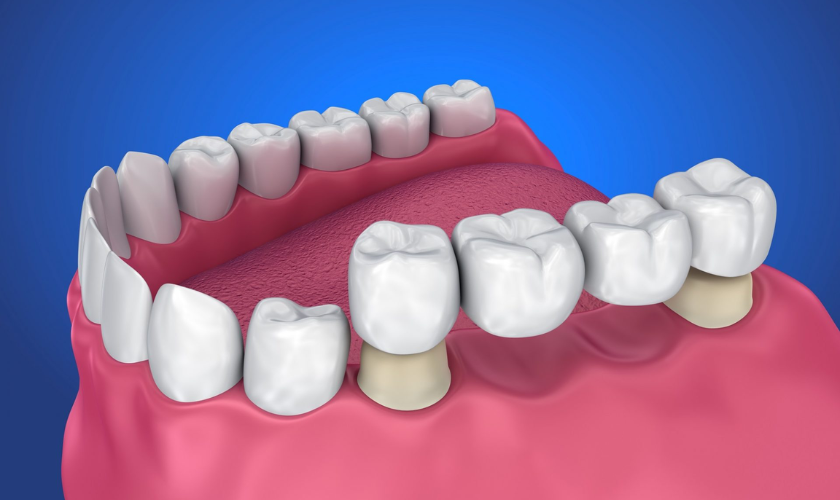$99 New Patient Special - Includes Exam, X-Ray and Basic Cleaning
Are Dental Bridges Right for You in 2024?

Dental health is a cornerstone of overall well-being, and missing teeth can significantly impact both appearance and function. One popular solution for replacing missing teeth is dental bridges. But are they the right choice for you in 2024? This comprehensive guide will explore the benefits, drawbacks, types, and advancements in dental bridges to help you make an informed decision.
Understanding Dental Bridges
A dental bridge is a prosthetic device used to fill the gap created by one or more missing teeth. It consists of one or more artificial teeth (pontics) anchored in place by crowns (abutments) on the adjacent natural teeth or implants. Dental bridges restore not only the aesthetics of your smile but also the functionality of your teeth.
Types of Dental Bridges
In 2024, several types of dental bridges are available, each with its own set of advantages and applications:
- Traditional Bridges: These are the most common type of dental bridge. They consist of one or more pontics held in place by dental crowns cemented onto the abutment teeth. Traditional bridges are sturdy and can replace molars and premolars effectively.
- Cantilever Bridges: Cantilever bridges are used when there is only one adjacent tooth to support the bridge. This type is less common today due to the potential for placing undue stress on the supporting tooth.
- Maryland Bridges: Also known as resin-bonded bridges, Maryland bridges use a metal or porcelain framework bonded to the back of the adjacent teeth. They are minimally invasive but are generally used for front teeth due to their lower strength.
- Implant-Supported Bridges: These bridges are anchored by dental implants instead of natural teeth. Implant-supported bridges are highly durable and provide a solution for multiple missing teeth without affecting adjacent natural teeth.
Benefits of Dental Bridges
- Restored Functionality: Dental bridges restore the ability to chew and speak properly. Missing teeth can cause difficulty in pronouncing certain words and in chewing food effectively.
- Aesthetic Improvement: A bridge fills the gap left by missing teeth, enhancing your smile and overall facial appearance. This can boost self-confidence and improve social interactions.
- Preventing Teeth Shifting: When a tooth is lost, the adjacent teeth can shift into the empty space, leading to bite problems and misalignment. A dental bridge prevents this by keeping the remaining teeth in their proper positions.
- Maintaining Face Shape: Missing teeth can lead to the deterioration of the jawbone, causing a sunken facial appearance. Dental bridges help maintain the shape of your face by providing the necessary support to the facial structure.
- Cost-Effective: Compared to other dental restoration options like implants, traditional dental bridges are generally more affordable while still providing excellent results.
Drawbacks of Dental Bridges
- Durability Concerns: While dental bridges are durable, they typically do not last as long as dental implants. They may need to be replaced after 5 to 15 years, depending on oral hygiene and material used.
- Potential Damage to Adjacent Teeth: Traditional and cantilever bridges require the reduction of adjacent teeth to place crowns. This can weaken these teeth and make them more susceptible to decay and other issues.
- Bone Loss: Unlike dental implants, bridges do not prevent the loss of jawbone in the area of the missing tooth. Over time, this can lead to changes in the facial structure.
- Maintenance: Dental bridges require meticulous oral hygiene to prevent decay and gum disease around the supporting teeth. Flossing around a bridge can be more challenging compared to natural teeth.
Advancements in Dental Bridge Technology
Dental technology has seen significant advancements, making dental bridges in 2024 more effective and aesthetically pleasing than ever before:
- Material Innovations: The materials used for dental bridges have improved significantly. Zirconia and porcelain provide better strength and a more natural appearance compared to traditional materials like metal and ceramic.
- Digital Impressions: Digital impression technology has revolutionized the process of creating dental bridges. This technology provides more accurate molds, leading to better-fitting and more comfortable bridges.
- 3D Printing: The use of 3D printing in dentistry allows for the precise fabrication of dental bridges, ensuring a perfect fit and optimal aesthetics. This technology also speeds up the production process.
- Improved Bonding Techniques: Advances in dental adhesives and bonding techniques have improved the stability and longevity of dental bridges, especially resin-bonded Maryland bridges.
- Comprehensive Diagnostics: Enhanced imaging technologies like cone-beam computed tomography (CBCT) provide detailed images of the jawbone and teeth, allowing for more precise planning and placement of dental bridges.
Are Dental Bridges Right for You?
Deciding whether dental bridges are right for you involves considering various factors:
- Number and Location of Missing Teeth: The location and number of missing teeth will influence the type of bridge that is most suitable. For example, implant-supported bridges are ideal for multiple missing teeth, while traditional bridges work well for a single missing tooth.
- Overall Oral Health: The health of your remaining teeth and gums is crucial. Healthy adjacent teeth are necessary for supporting a traditional bridge. If you have periodontal disease or weak adjacent teeth, an implant-supported bridge might be a better option.
- Bone Density: If you have significant bone loss in the jaw, an implant-supported bridge might be challenging without additional procedures like bone grafting. A traditional bridge might be more feasible in such cases.
- Budget: Cost is an important consideration. While traditional bridges are generally more affordable upfront, implant-supported bridges can be more cost-effective in the long run due to their durability and lower maintenance costs.
- Aesthetic Preferences: If you prioritize a natural appearance, materials like zirconia or porcelain bridges offer superior aesthetics. Discuss your aesthetic goals with your dentist to choose the best option.
- Lifestyle and Habits: Your lifestyle and habits, such as smoking or grinding teeth, can impact the longevity of a dental bridge. Discuss these factors with your dentist to determine the most suitable type of bridge for your needs.
Dental bridges remain a popular and effective solution for replacing missing teeth in 2024. They offer numerous benefits, including restored functionality, improved aesthetics, and prevention of teeth shifting. However, they also come with certain drawbacks, such as potential damage to adjacent teeth and the need for meticulous maintenance.
Advancements in dental technology have significantly enhanced the quality and options available for dental bridges, making them more durable, aesthetically pleasing, and comfortable. When deciding if a dental bridge is right for you, consider factors such as the number and location of missing teeth, overall oral health, bone density, budget, aesthetic preferences, and lifestyle.





